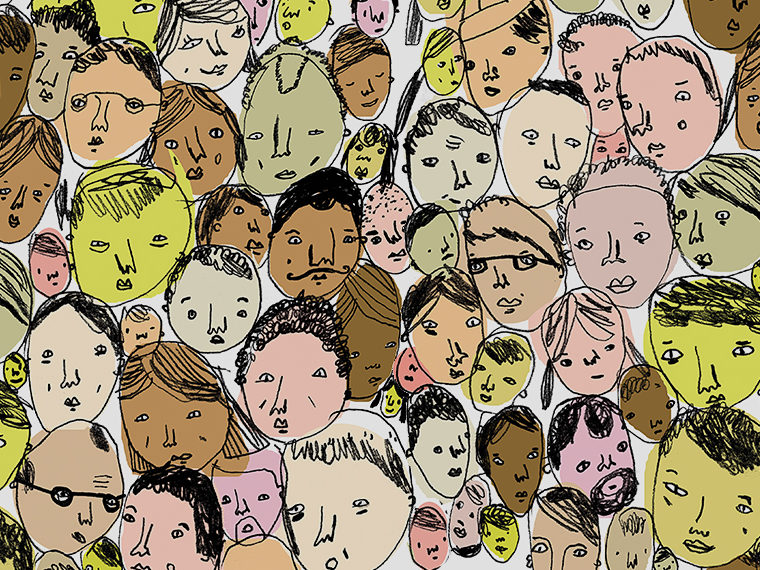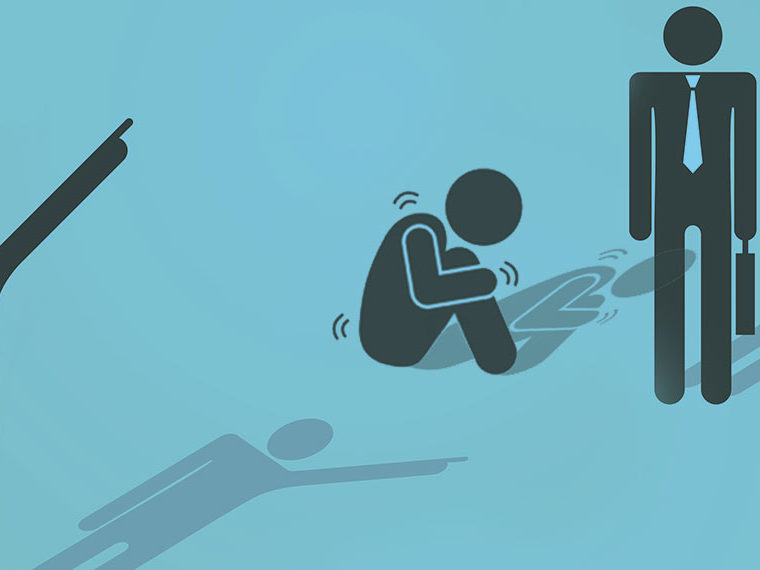Whites reprimanded for using a Black stereotype express fewer biases about Latinx people and women
Recent protests around racism and police brutality have triggered some soul-searching. What if we hear someone saying something racist or sexist? Shouldn’t we just let it go, many people assume, since we’re unlikely to change someone’s mind or their behavior?
A paper published in Social Psychological and Personality Science finds surprising value in confronting bigoted remarks. In three studies, researchers found that white subjects confronted over their use of negative stereotypes about one group reduced their bigoted behavior not only against that group, but also against other minorities. And those same people reduced their use of negative stereotypes about women as well.
The findings suggest that interpersonal confrontations can be widely influential, reducing prejudice against multiple groups and multiple stereotypes, according to the paper’s authors: University of Connecticut’s Kimberly E. Chaney, Rutgers University’s Diana T. Sanchez, California State University, Long Beach’s Nicholas P. Alt and UCLA Anderson’s Margaret Shih.
Opt In to the Review Monthly Email Update.
The paper pushes beyond research into abating single prejudices and documents the “secondary transfer effects” of prejudice confrontation.
Prejudice reduction strategies often play a key part of sensitivity training that executives use to identify and confront racism within their organizations. The Trump administration is under attack for its recent decision to pull funding for such training, calling it “divisive, anti-American propaganda.”
This paper builds on previous research that found individuals who held negative attitudes toward, say, Black people, often held similar attitudes toward other minorities. Those studies showed that people confronted with their prejudice were able to better identify when and how they used negative stereotypes. This provided a “critical first step” in motivating them to change their behavior.
Given this evidence of “generalized prejudice,” the authors theorized that confronting one set of prejudices would likely lead to a more general reduction in prejudicial behavior. They sought to test this using online and in-person research.
Two of the studies were similar in design. In the first, participants were shown 16 images that were paired with sentences designed to evoke a stereotypical response. For example, they might see a photo of a Black man accompanied by the sentence “This person could be found behind bars,” and their task was to make a quick judgment about the person. Participants often responded in a stereotypical manner (labeling the person criminal), even though they could make a neutral response (such as bartender).
To some of the randomly selected participants, the experimenter responded in a confrontational manner, saying, “I thought some of your answers seemed a little offensive. People shouldn’t use stereotypes, you know?” before moving on with the experiment.
The participants were then asked to record whether they experienced various emotions during the survey, such as feelings of guilt or anger toward the experimenter. A week later, the participants received a similar survey online that included photos and descriptive sentences of white, Black and Latinx individuals. Their answers were coded as either stereotypical or neutral.
The second study looked at the impact of a similar scenario on attitudes toward women. In both studies, white participants confronted for using negative stereotypes about Black people subsequently used fewer negative stereotypes about Latinx people and women.
In the final study, white male participants in an online survey were asked to recommend responses to four scenarios involving issues of morality. One of the situations involved a nurse. Afterward, a randomly selected group was confronted for referring to the nurse as a she. Then they were asked a series of questions, some of which were designed to determine whether they were motivated by racial egalitarianism. For example, they were asked to rate on a scale of 1 (not often) to 7 (very much) the question, “Over the last 24 hours, how often did you find yourself thinking about how often you use racial stereotypes?”
In this study, the white men confronted online by a stranger for using a female gender role stereotype used fewer negative Black and Latinx stereotypes compared to participants who were not confronted. That behavior held true 24 and 72 hours later, suggesting the “endurance” of the secondary transfer effects, the authors noted.
Featured Faculty
-
Margaret Shih
Interim Dean and Neil Jacoby Chair in Management; Professor of Management and Organizations
About the Research
Chaney, K. E., Sanchez, D. T., Alt, N. P., & Shih, M. J. (2021). The Breadth of Confrontations as a Prejudice Reduction Strategy. Social Psychological and Personality Science, 12(3), 314-322.






